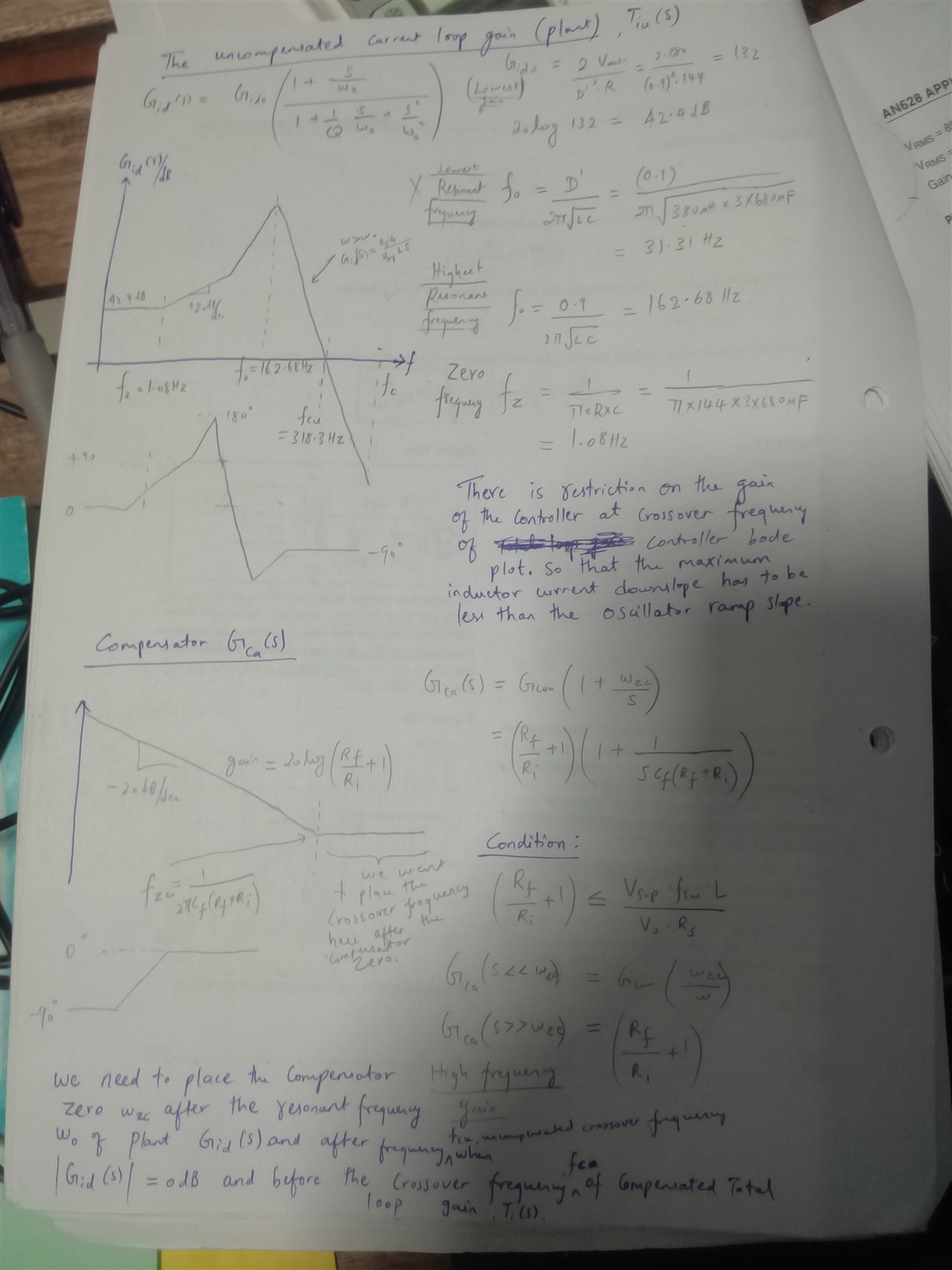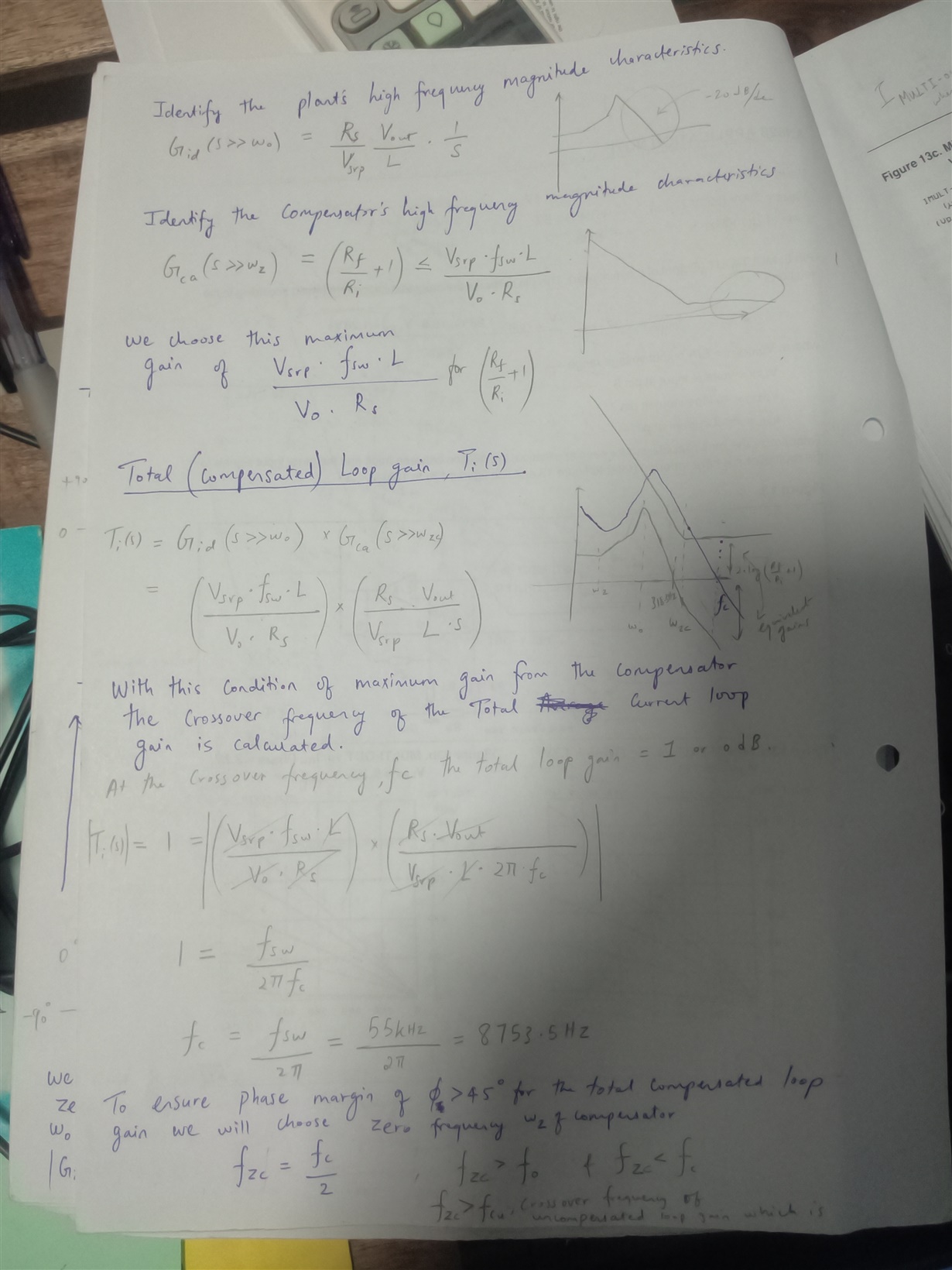Hello TI,
I am a NEW hire in our company and I am trying to understand the Analog PFC in our current design using L4981A PFC controller IC.
I need to fully understand the feedback control portion in this circuit because we are having some input current oscillation problems (Dancing waveform that is non-sinusoidal).
I am referring to the L4981A's application note for help. You can access it in this link:
We have plans to move into TI products especially the UCD3138A IC family of digital PFC solutions.
My questions below are related to how to select compensation network values for the inner current loop of Boost PFC.
Doubts from pages 7,8 & 9
The equation below is trying to say that the inductor down slope must be smaller than the ramp up slope of the PWM ramp that sets the switching frequency.
Inductor ramp down slope (we are seeing form negative side of sense resistor, before GND) is during Boost MOSFET turn ON so the voltage across inductor should be Vin and NOT VO like it is shown in the equation below right?
What is the value of the current amplifier gain? Is it made up of low frequency gain and high frequency gain referring to figure 9.
Actually the multiplication, ( VO/L . Rs . Gca ) is the quantity of gradient that is output from C/A right?
From page 9,
How is the voltage Vrs equal to below? I do not understand how Vrs is found by taking the input voltage (gradient), Vrs of +ve terminal of C/A and multiplying it to 1/S ?
What is the meaning of worst condition here? where did this integrator with DC pole come from?
What is the quantity Gavg ?
How did Gavg come to be as shown below? What is its physical meaning?
Why is Gavg multiplied to Gca? Are they combining two transfer functions? Is Gca the high frequency transfer function or Gavg? What is the reason to split them?
The crossover frequency comes to the above after I equated Gca . Gavg = 0'
Where did the zero come from in the below equation? Gca is not frequency dependent and Gavg only has an integrator with DC pole so where did the zero come from?
Also why is there a zero in Gca around 6000 Hz in the below graph? Where did it come from?
Please also give the closed loop final transfer function of the compensation network shown in Figure 9
Please help to answer my questions as I try to understand the current loop compensation portion of this PFC boost converter. We are moving into TI products although we find them to be quite advanced.
Thank you for your help.
Regards,
Peeterson.
PFC BOOST LOOP-COMPENSATION COMPENSATION FREQUENCY-RESPONSE CURRENT-LOOP COMPENSATION- NETWORK




